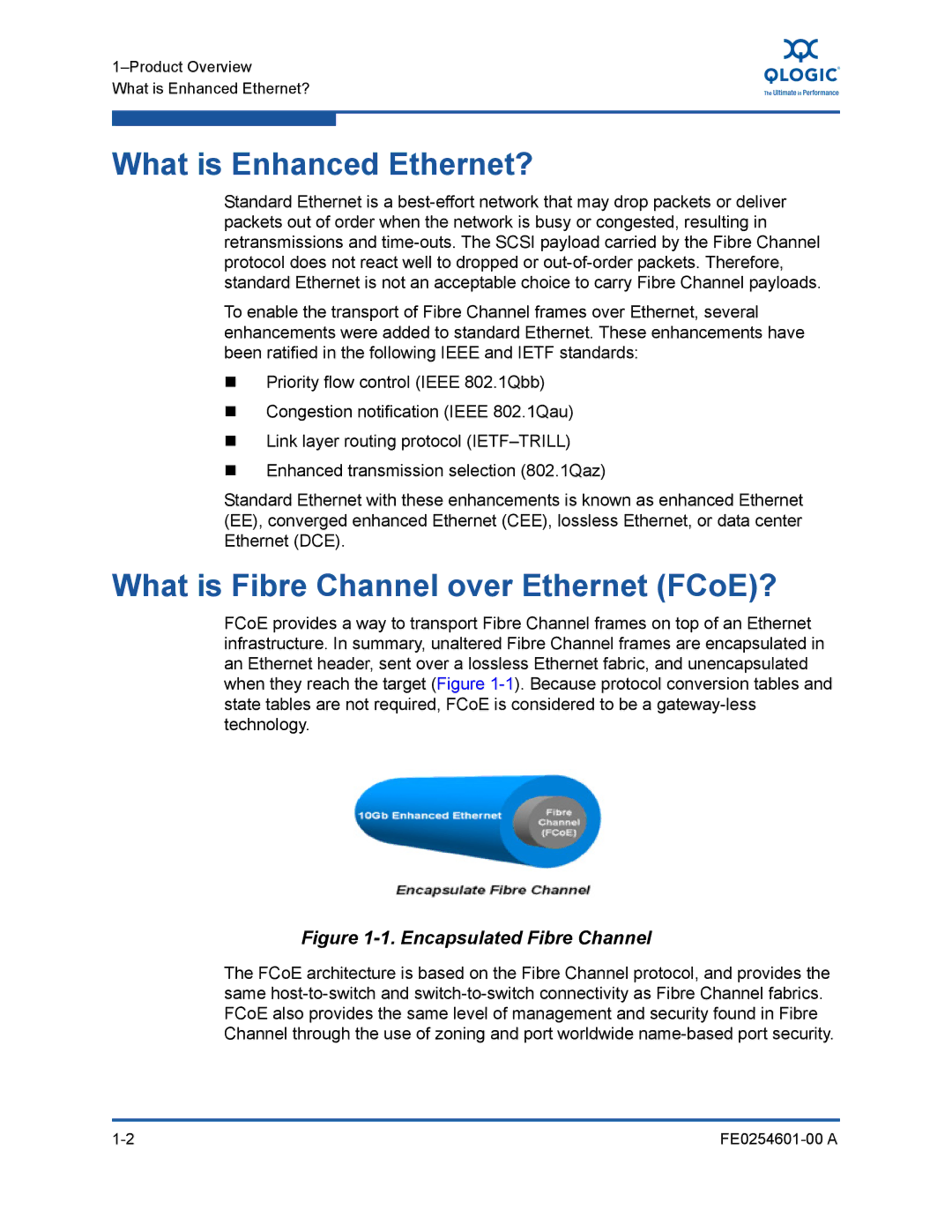
What is Enhanced Ethernet?
What is Enhanced Ethernet?
Standard Ethernet is a
To enable the transport of Fibre Channel frames over Ethernet, several enhancements were added to standard Ethernet. These enhancements have been ratified in the following IEEE and IETF standards:
Priority flow control (IEEE 802.1Qbb)
Congestion notification (IEEE 802.1Qau)
Link layer routing protocol
Enhanced transmission selection (802.1Qaz)
Standard Ethernet with these enhancements is known as enhanced Ethernet (EE), converged enhanced Ethernet (CEE), lossless Ethernet, or data center Ethernet (DCE).
What is Fibre Channel over Ethernet (FCoE)?
FCoE provides a way to transport Fibre Channel frames on top of an Ethernet infrastructure. In summary, unaltered Fibre Channel frames are encapsulated in an Ethernet header, sent over a lossless Ethernet fabric, and unencapsulated when they reach the target (Figure
Figure 1-1. Encapsulated Fibre Channel
The FCoE architecture is based on the Fibre Channel protocol, and provides the same
